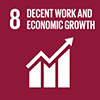June 2022 - You are accessing an old version of our website. The SDGs Voluntary Commitments have been migrated here: https://sdgs.un.org/partnerships
You will be redirected to the new Partnership Platform in 10 seconds.
June 2022 - You are accessing an old version of our website. The SDGs Voluntary Commitments have been migrated here: https://sdgs.un.org/partnerships
You will be redirected to the new Partnership Platform in 10 seconds.
Source: Shanghai Manual: A Guide for Sustainable Urban Development in the 21st Century (2010)
Historically, the City of Bilbao, Spain was dominated by heavy industries, such as steel, shipyards, and machine engineering. Metropolitan Bilbao suffered from serious environmental degradation as a result of its industrial past. Air, water and soil were seriously polluted. Industrial waste and household sewage drained into the river without being treated until the late 1980s. The main harbor or Nervión was ecologically dead. In response, the city of Bilbao drafted the strategic plan for the Revitalization of Metropolitan Bilbao in 1991. This strategic plan outlined four major fields of action, including the formation of a knowledge-based high-tech sector, inner-city urban renewal, environmental improvements and the strengthening of cultural identity.
To carry out its plan, Bilbao Ría 2000 was founded in 1992 as a non-profit, publicly sponsored partnership that operates based on a complex model involving all levels of government. By investing a total of 560 million between 1997 and 2006, Bilbao Ria was able to regenerate and redevelop the central business district of Bilbao through improvements in harbor and railway infrastructure. In addition, investments were made in revitalizing key areas of the city that effectively preserved the city's cultural identity. Perhaps the most important project was the investment of 1 billion in the construction of a new water sanitation system that reduced environmental contamination of the city and the harbor.
The financial model of land value enhancement through changing the land-use of old industrial sites has been very successful in financing urban regeneration in Bilbao. The financially self supporting approach enables the agency to finance its own redevelopment strategies. The model of Bilbao Ría 2000 demonstrates that action can be taken even in the context of strained public budgets. A key to the success was bringing together all levels of government in the project. This carefully constructed but functioning balance between different political interests has been very important.

